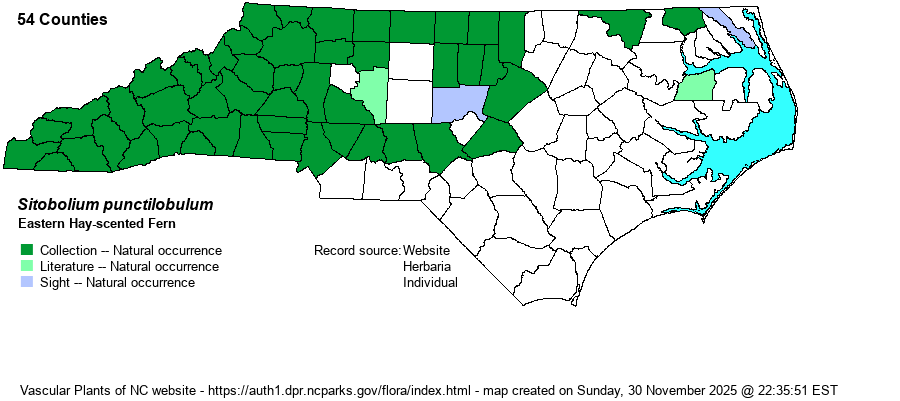| Author | (Michaux) Desvaux | |
| Distribution | Throughout the Mountains and Piedmont; in the Coastal Plain found only in a few northern counties and rare in the Sandhills (Moore County at Weymouth Woods SNP).
This is a widespread Northeastern species, ranging from eastern Canada south to central NC, central AL, and AR. | |
| Abundance | Common to often very common in the Mountains; fairly common to common in the western Piedmont, but mostly uncommon to infrequent in the central and eastern Piedmont. Very rare in the Coastal Plain. | |
| Habitat | This is a species of acidic soils, mostly in dry to mesic sites. It grows best in mid- to higher elevations, in upland hardwood forests, as well as in pastures, clearings, wooded borders, and roadbanks. It often favors rocky sites. Farther east into the Piedmont, it grows in somewhat richer sites, but still mostly in upland hardwood forests and their margins. | |
| Phenology | Fruits from June to September. | |
| Identification | This is a typical-looking fern, with a frond about 2-2.5 feet tall. The petiole is reddish-brown at the base but mostly yellow-green. The blade is ovate to lanceolate, with 17-25 pairs of pinnae, and the blade is bi-pinnately divided, and the pinnules are pinnatifid (nearly cut to the base). This yields a very lacy-cut frond, with the lowest pinnae about equal in size. The frond has a scent of freshly-cut hay (hence the common name), but you may need the sori on the underside of the pinnae to be certain you have this species. The sori are solitary and marginal, along the edge of a pinnule. The Athyrium species (lady-ferns) are similar in the frond, but the sori beneath the frond are somewhat elongate (not rounded) and located along the veins near the midrib of a pinnule. If sori are not present, you could have trouble clinching the identification, though Weakley (2018) states that the species "can be distinguished from other woodland ferns with deciduous fronds of generally similar size and shape (such as Athyrium, Dryopteris, and Parathelypteris) by the following characteristics: leaves yellow-green or pale green in color, with whitish-gray glandular trichomes, petioles silvery-pilose, leaves borne scattered (as clonal patches), sori tiny (<0.5 mm in diameter)". | |
| Taxonomic Comments | Until very recently, long named as Dennstaedtia punctilobula, fide Weakley 2022).
| |
| Other Common Name(s) | Hay-scented Fern, Pasture Fern, Boulder Fern. Simply calling it "Hay-scented Fern" will suffice in the Southeast. | |
| State Rank | S5 | |
| Global Rank | G5 | |
| State Status | | |
| US Status | | |
| USACE-agcp | | |
| USACE-emp | | |

